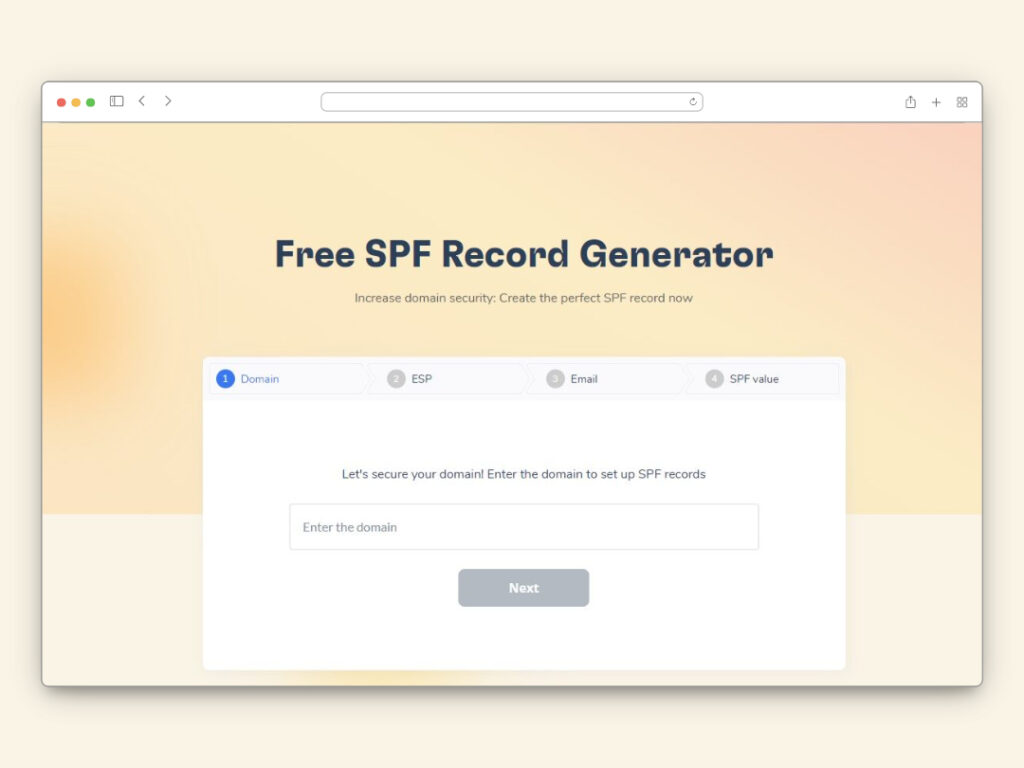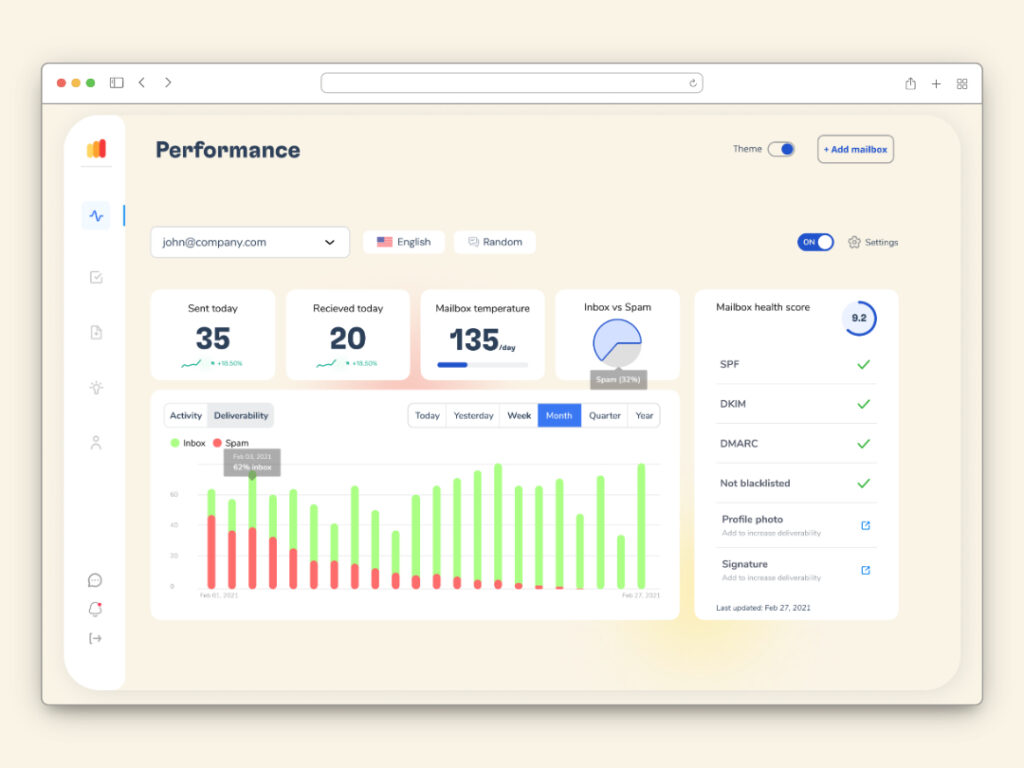Why do some emails get into the inbox and others wind up in the spam folder? Email deliverability is the keystone of effective email marketing in the fast-paced digital industry, not just a technical term. According to current research, 20% of emails never make it to their target inboxes worldwide, which has an impact on both consumer engagement and company profitability.
Here comes Mailgun, a major player in the email service industry that is made to send your emails right to the recipients. Thousands of businesses trust Mailgun to precisely optimize their email marketing. What happens, though, when deliverability rates decline and even the finest tools fail? Realising how important email deliverability is becomes essential. It goes beyond just sending emails to include making sure they get in your audience’s inbox prepared to interact and convert. Let us explore the essential part of email deliverability in your marketing plan as we delve into the world of Mailgun.
Understanding email deliverability

The measure of email deliverability rate shows if your email campaigns reach the inboxes of your recipients. It gauges how many sent emails are not filtered into spam folders or discarded by the receiving servers. It basically measures how reliable and efficient email services and ISPs (Internet Service Providers) think of your service.
Why Do Businesses Need High Deliverability?
Email marketing companies need to have a high deliverability rate. It affects everything from open rates to conversions directly, so influencing the effectiveness of campaign outreach. Higher chances of interaction when emails get to the inbox translate into more sales, better client retention, and a better reputation for the company. On the other hand, poor deliverability means your well constructed communications may never be noticed, squandering money and chances for expansion.
Having your emails regularly delivered to your audience’s inbox highlights the dependability and efficacy of your marketing initiatives, hence good deliverability should be a major goal of any email marketing plan.
How deliverability is measured
Metrics Used to Gauge Deliverability
Whether an email ends up in the spam bin or the inbox, the delivery rate measures how many emails were successfully sent to the receiving server.
Emails that were unable to be delivered at all are shown by a bounce rate. Hard bounces are those that are permanent (such as an email address that doesn’t exist), while soft bounces are usually transient (such as a full mailbox).
Spam Complaints. Emails categorized as spam are tracked by this statistic. Sender reputation and deliverability can both be seriously impacted by a large volume of spam complaints.
Although more akin to engagement, open rates and click-through rates (CTR) can also offer oblique information on deliverability. Low CTRs and open rates may indicate that emails are either not getting into the inbox or are not visually appealing enough to get opened.
Related – Boost Your Email Open Rates: 10 Practical Strategies
Challenges in Measuring Deliverability Accurately
Even with these measurements, precisely determining deliverability poses a number of problems:
- Lack of Visibility. Marketers are largely unaware of where an email ends up once it is approved by the recipient’s server. It’s not always obvious, for example, whether an email ends up in the spam bin or the inbox.
- ISP rules and Algorithms. The filtering algorithms and rules of each ISP are unique and subject to regular and unnoticed changes. It’s unpredictable how these adjustments will impact whether an email is sent to the inbox or flagged as spam.
- Diverse Customer Behaviors. Open rates and other engagement metrics—which are frequently used to deduce deliverability—may fluctuate depending on how different email clients and devices view and handle emails.
- Feedback Loop Limitations. While some ISPs may offer feedback loops, the information may not be thorough enough to identify certain problems with email marketing.
Businesses need to constantly check and modify their tactics to keep high deliverability given these complexity. They can measure the success of their email marketing using both direct deliverability measurements and indirect engagement indicators.
Common issues affecting deliverability
Ensuring emails reach their intended inboxes involves navigating a landscape of potential pitfalls. Here’s an overview of typical factors that can significantly lower email deliverability:
Poor List Hygiene
- Outdated Email Addresses. Not regularly updating and cleaning your email list can lead to a high number of bounces, which negatively impacts deliverability.
- Lack of Segmentation and Inactivity. Sending emails to unengaged subscribers who have not opened or interacted with past emails can hurt your sender reputation.
Related – 6 Must-Have Email List Scrubbing Tools for Spotless List Hygiene in 2023
Low Sender Reputation
- High Bounce Rates. Consistently sending to invalid email addresses can signal to ISPs that your list management practices are poor.
- Frequent Complaints. If recipients often mark your emails as spam, ISPs may begin to automatically filter your communications into the spam folder.
Related – From Good to Great: Factors That Affect Domain Reputation
Content that Triggers Spam Filters
- Misleading Subject Lines. Using sensational or deceptive subject lines can trigger spam filters and deter recipients from engaging.
- Overuse of Sales Language. Phrases like “Buy now!” or “Limited time offer!” can be flagged by sophisticated algorithms designed to catch spammy content.
- Poor HTML Coding. Emails that are poorly coded, or look different from what major email providers expect, can also end up in spam folders.
Related – Useful email content. Examples.
Too Large Volume of Sending Without Email Warm-Up
- Sudden Spikes in Email Volume. An abrupt increase in the volume of emails sent without a proper warm-up phase can alert ISPs, causing them to scrutinize or block your emails. Gradually increasing volume shows ISPs that your email activity is legitimate and consistent.
Additional Challenges
- Inconsistent Sending Frequencies. Sporadic email campaigns can confuse recipient email servers, which prefer consistent communication patterns.
- Lack of Personalization. Generic, one-size-fits-all content is less engaging and more likely to be ignored or marked as spam, reducing deliverability.
Causes of sudden drops in deliverability
Your marketing campaigns may be far less effective if email deliverability suddenly drops, and prompt resolution depends on knowing the possible causes.
👉 One typical reason is that you end up in spam traps, which can be pure traps designed just to catch spammers and never used for real communication, or old or recycled email addresses that were once valid but now just help to identify spammers.
👉 Being included on email blacklists is a major other problem. An Internet Service Provider (ISP) may blacklist you, severely lowering your email deliverability, if they see any unusually large frequency of spam complaints or suspicious behavior from your domain. Should you be included, third-party blacklists —maintained by outside groups that track and report spam—can also ban your emails from many ISPs.
You can quickly, freely and easily check whether your IP or domain are on blacklists here
👉 Changes in email volume too can cause deliverability to drop precipitously. When email volume suddenly increases or decreases, particularly without a slow warm-up for new IPs or infrastructures, ISP spam filters may become aware of this irregular behavior and suspect possible spamming. Apart from that, breaking your usual mailing schedule can damage the rapport you have established with ISPs.
👉Deliverability can be immediately and noticeably impacted by technical issues such email authentication methods like SPF, DKIM, and DMARC failing or by issues with your email server like outages or a bad IP rating. High deliverability rates need constant observation of these factors and making sure your email procedures follow best standards.
Use Free SPF ot DMARC Record Generator to generate the correct record.

Reliability and accuracy of deliverability metrics
If marketers use data to shape their efforts, email deliverability metrics must be reliable, yet occasionally they might be deceptive or lacking.
Reliability of Reported Metrics
Like many email service providers, Mailgun provides delivery, open, and click-through rates among other metrics to monitor the success of email campaigns. Because email delivery systems are so complicated, these indicators have inherent limits even if they are very helpful for determining the overall performance of email campaigns. An email may, for example, just be claimed to have been accepted by the recipient’s server; it may not have been in the spam or inbox. Real deliverability may be distorted as a result.
Inaccuracies in Common Metrics
Open Rates. Traditionally, open rates have been tracked using tiny, invisible images embedded in emails. However, this method is not foolproof. If the recipient’s email client is set not to load images automatically, the open isn’t recorded, leading to underreported open rates. Moreover, privacy changes, like those introduced in Apple’s Mail Privacy Protection, now pre-load images to protect user privacy, which can artificially inflate open rates.
Click-Through Rates. While generally more reliable than open rates, click-through rates can also be affected by the placement and relevance of links within the email content. A poorly designed email may lead to low engagement, not necessarily reflecting the email’s deliverability or the content’s appeal.
Bounce Rates. Bounce rates are typically straightforward—either an email is delivered, or it isn’t. However, the reason behind a bounce, whether it’s due to a full inbox or a permanently inactive email, isn’t always clear, which can affect how deliverability issues are diagnosed and addressed.
Given these nuances, marketers must critically assess Mailgun’s metrics and complement them with regular testing and validation practices. Tools like Warmy.io offer additional testing capabilities that can provide a more accurate picture by simulating real-world email sending and receiving conditions, helping to confirm the reliability of Mailgun’s metrics and refine campaign strategies effectively.
Improving email deliverability with Warmy.io

Maximising the effect of your email marketing initiatives requires improving email deliverability. Warmy.io helps here by offering a range of tools made to increase the reach and efficacy of your email campaign.
The all-inclusive Warmy.io platform focuses on enhancing email deliverability with sophisticated testing and monitoring capabilities. It helps customers manage authentication protocols, optimize email content, and apply industry best practices, therefore addressing typical deliverability problems. The objective is to prevent spam filters and other obstacles so that your emails not only get to the recipient’s server but also make it into the mailbox.
Step-by-Step Guide on Using Warmy.io
1. Sign up for the 7-day Free Trial
- Start by visiting the Warmy.io website.
- Navigate to the trial section and register for an account to gain access to all tools and features. The free trial offers a full experience without any initial investment, allowing you to test the service’s effectiveness before making a commitment.
2. Utilizing Tools like SPF and DMARC Record Generator
- SPF (Sender Policy Framework) Record Setup. This tool helps you create an SPF record that verifies your emails by listing all authorized sending IPs associated with your domain. This prevents spammers from using your domain to send unauthorized emails.
- DMARC (Domain-based Message Authentication, Reporting, and Conformance) Record Generator. DMARC helps protect your domain from unauthorized use by instructing email providers on how to handle emails that don’t meet SPF or DKIM (DomainKeys Identified Mail) requirements. Warmy.io’s DMARC tool guides you in setting up a DMARC record correctly to improve security and deliverability.
3. Benefits of Free Email Deliverability Tests and Email Template Checkers
- Email Deliverability Tests. These tests simulate sending processes to measure how different email clients and ISP filters treat your emails. They provide insights into potential deliverability issues before you launch a campaign.
- Email Template Checker. This tool analyzes your email templates to ensure they are optimized for high deliverability. It checks for common red flags that could direct your emails to spam folders and offers recommendations for improvements.
Conclusion
To make sure your marketing efforts successfully reach their target audience, Mailgun email deliverability must be maintained high. In addition to following industry standards for email management and content production, this calls for ongoing testing and monitoring of your email campaigns. Because email algorithms and user behavior are dynamic, what works now might not work tomorrow. Maintaining a high deliverability rate requires routine audits of your email lists, upgrading of your sending procedures, and keeping up with the newest developments in email technology.
In this continuing process, tools like Warmy.io are essential. Before deliverability problems affect your efforts, they offer the testing and resources you need to identify and fix them. Warmy.io provides a plethora of tools intended to improve your email success, from configuring SPF and DMARC records to conducting advanced deliverability tests and email template optimization.
Try Warmy.io’s free trial, which lasts for seven days. Feel directly how their products can raise the deliverability of your emails and, consequently, the general efficacy of your email marketing campaigns.
📜 Related article:
FAQ
What is Mailgun deliverability?
Mailgun deliverability refers to the ability of emails sent via the Mailgun email service to successfully reach the intended recipients' inboxes without being filtered out as spam or blocked by email providers.
How can I check my Mailgun deliverability rate?
You can check your Mailgun deliverability rate by monitoring the delivery and open rate statistics provided in your Mailgun dashboard. Additionally, tools like Warmy.io can provide deeper insights and diagnostics on your email performance.
Why are my emails sent via Mailgun going to the spam folder?
Emails may be directed to the spam folder due to issues such as poor sender reputation, lack of proper email authentication (SPF, DKIM, DMARC), or content that triggers spam filters. Regularly reviewing and optimizing these factors can help improve deliverability.
What steps can I take to improve Mailgun deliverability?
To enhance Mailgun deliverability, ensure your email lists are clean and up-to-date, set up and verify SPF, DKIM, and DMARC records, warm up your IP if it’s new, and avoid sudden spikes in email volume. Also, using a tool like Warmy.io can help you test and optimize your email setup.
How long does it take to improve Mailgun deliverability?
The time it takes to improve Mailgun deliverability can vary depending on the specific issues being addressed. Simple fixes like updating DNS records may see immediate effects, while more complex issues like improving sender reputation can take weeks or months of consistent effort.
Where can I find more resources on Mailgun deliverability?
More resources on Mailgun deliverability can be found on the Mailgun website, particularly in their documentation and blog sections. Additionally, forums, webinars, and third-party tools like Warmy.io offer practical insights and support for optimizing Mailgun's email deliverability.











